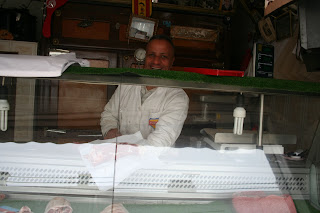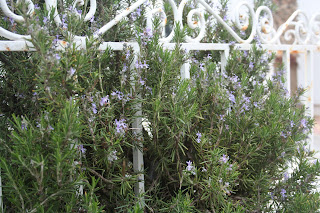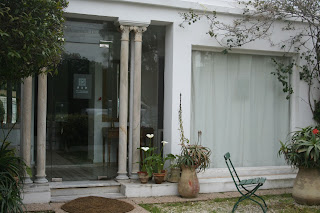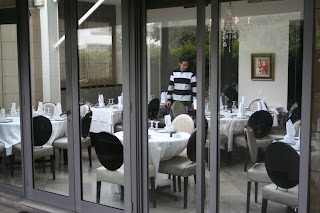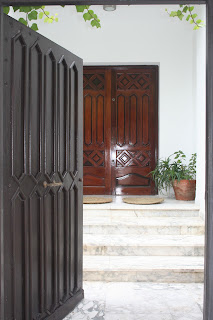I had in mind writing something really clever about exploring my own backyard, a 100-yard radius of my house. I went out with my camera on a Sunday morning and started photographing all of the daily street and sea scenes that are common sights. I was having a wonderful time, but kept batting away the cartoonish feeling that I was reenacting the children’s book, Rosie’s Walk. So let’s just get it out of the way. Here is Rosie’s Walk and then I’ll take you on the tour of my neighborhood.
Julie took a walk out her front gate and to the corner where shops sell fruit, meat, prepared take away foods, and staples, meaning eggs, cheese, pastas, olives, harissa (a hot, roasted pepper paste), preserved lemons, and spices in bulk. Just the stuff you need for everyday cooking. She bought some lamb to try a tagine she is planning to make when her friends come to visit in two weeks.
On the way back by her house, she admired the Islamic architecture and some budding flowers. Notice yet another photo of a Rosemary plant.
She walked past ex-president Ben Ali’s exwife’s house to the Punic Ports where fishermen and families were enjoying the sea.
Then she walked to the main street where there are several smart restaurants and boutiques.
On the way home, she peeked through one of the alleyways at each block that have stairways down to the sea to watch a fisherman wrestling with his nets.
Finally, she walked through her own gate and into her real backyard where she photographed a couple of the new plants that are waiting to be planted. These are olives and a lemon tree that is no more than a whip, but has already born a few lemons this season and is putting on new buds for next year. What did she tell you about lemon trees?
She made it back inside her own house just in time to make dinner, “Fragrant Lamb with Prunes and Almonds”, recipe by David Tanis.
